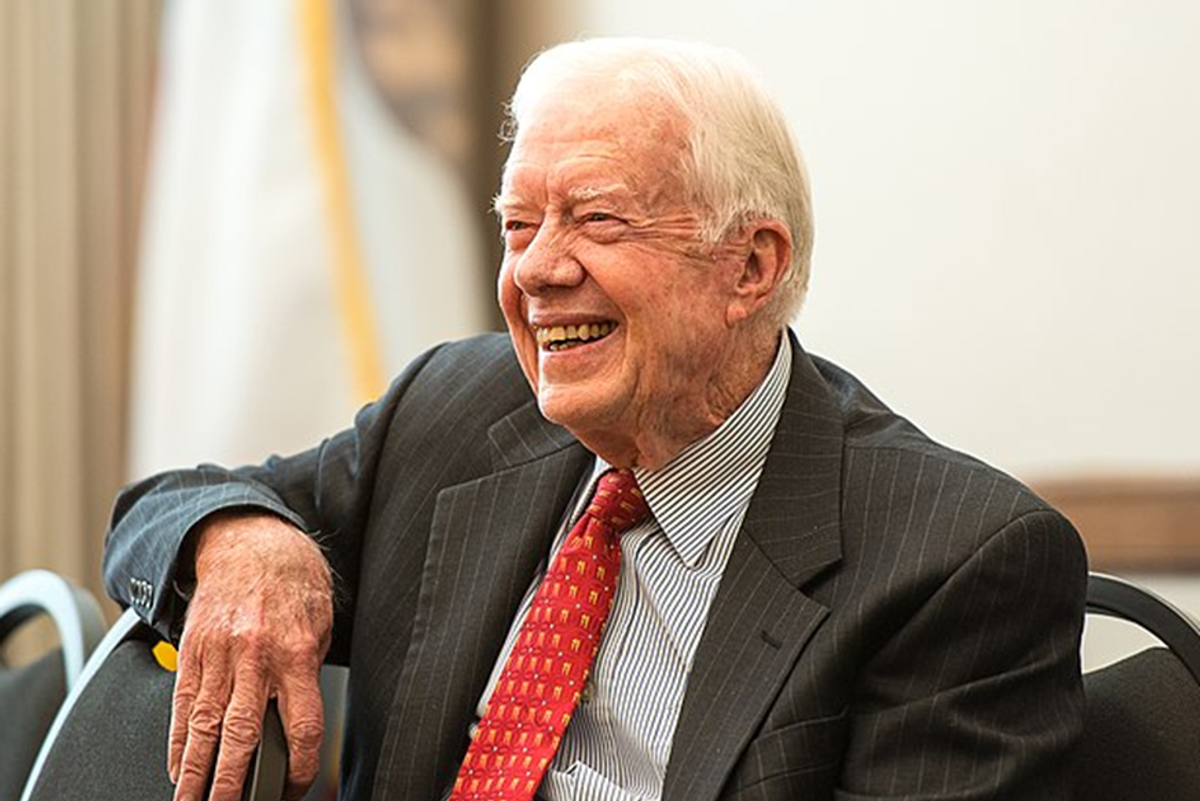Jimmy Carter shares four ways Americans can save democracy in a powerful January 6 op-ed

Jimmy Carter at the Commonwealth Club in California, 2013.
It’s been a year since the January 6 insurrection at the Capitol Building and it’s clear that America has failed to learn the lessons of the uprising. The attack on the Capitol left five dead and defaced a monument to the greatest gift that humankind has bestowed upon itself, democracy.
It was a prime example of the damage that has been done to this country by opportunists on the right who promoted the false narrative that the 2020 election was stolen.
The riot showed what people in power put at risk when they spread misinformation and cast doubt on the democratic process. Surely, this horrific example would have caused people in power—whether in Washington, the media, or America’s religious institutions—to cool down the rhetoric and restore faith in democracy.
But sadly, it hasn’t.
A new NRR Ipsos poll found that two-thirds of GOP voters, and just over one-third of all voters, still believe the “Big Lie.”

On the one-year anniversary of the attack, former president Jimmy Carter wrote an op-ed for The New York Times to warn America of the danger of promoting the “Big Lie” and how it can lead to the downfall of our “precious democracy.” But he didn’t just sound the alarm, he also provided four practical steps on which Americans of all political stripes can reverse course and improve our collective faith in vital institutions.
Carter opens “I Fear for Our Democracy” by lamenting the fact the uprising hasn’t been taken seriously enough.
“There followed a brief hope that the insurrection would shock the nation into addressing the toxic polarization that threatens our democracy,” Carter writes. “However, one year on, promoters of the lie that the election was stolen have taken over one political party and stoked distrust in our electoral systems.”
Carter has a real fear that Americans may lose democracy altogether.
“I now fear that what we have fought so hard to achieve globally—the right to free, fair elections, unhindered by strongman politicians who seek nothing more than to grow their own power—has become dangerously fragile at home,” Carter writes.

The former president has a long history of promoting democracy abroad and understands its power to transform a nation.
“After I left the White House and founded the Carter Center, we worked to promote free, fair and orderly elections across the globe,” Carter writes. “I led dozens of election observation missions in Africa, Latin America and Asia, starting with Panama in 1989, where I put a simple question to administrators: ‘Are you honest officials or thieves?’”
Ever the pragmatic politician, Carter laid out four ways that Americans can work together, regardless of party, to undo the damage done to the democratic process over the last few years.
1. Gather around common values.
2. Reform the election system.
"Second, we must push for reforms that ensure the security and accessibility of our elections and ensure public confidence in the accuracy of results.”
3. Be about more than politics.
"Third, we must resist the polarization that is reshaping our identities around politics. We must focus on a few core truths: that we are all human, we are all Americans and we have common hopes for our communities and our country to thrive.”
4. Fight disinformation.
"Lastly, the spread of disinformation, especially on social media, must be addressed.”

In the op-ed, Carter refrains from speculating on what would happen in America if its citizens completely lost all faith in the democratic process. But it's not hard to imagine it would quickly lead to the decay of every institution that upholds the fragile framework for freedom and civility.
“Our great nation now teeters on the brink of a widening abyss,” Carter warns in his final paragraph. “Without immediate action, we are at genuine risk of civil conflict and losing our precious democracy. Americans must set aside differences and work together before it is too late.”
You can read the entire op-ed at The New York Times.

